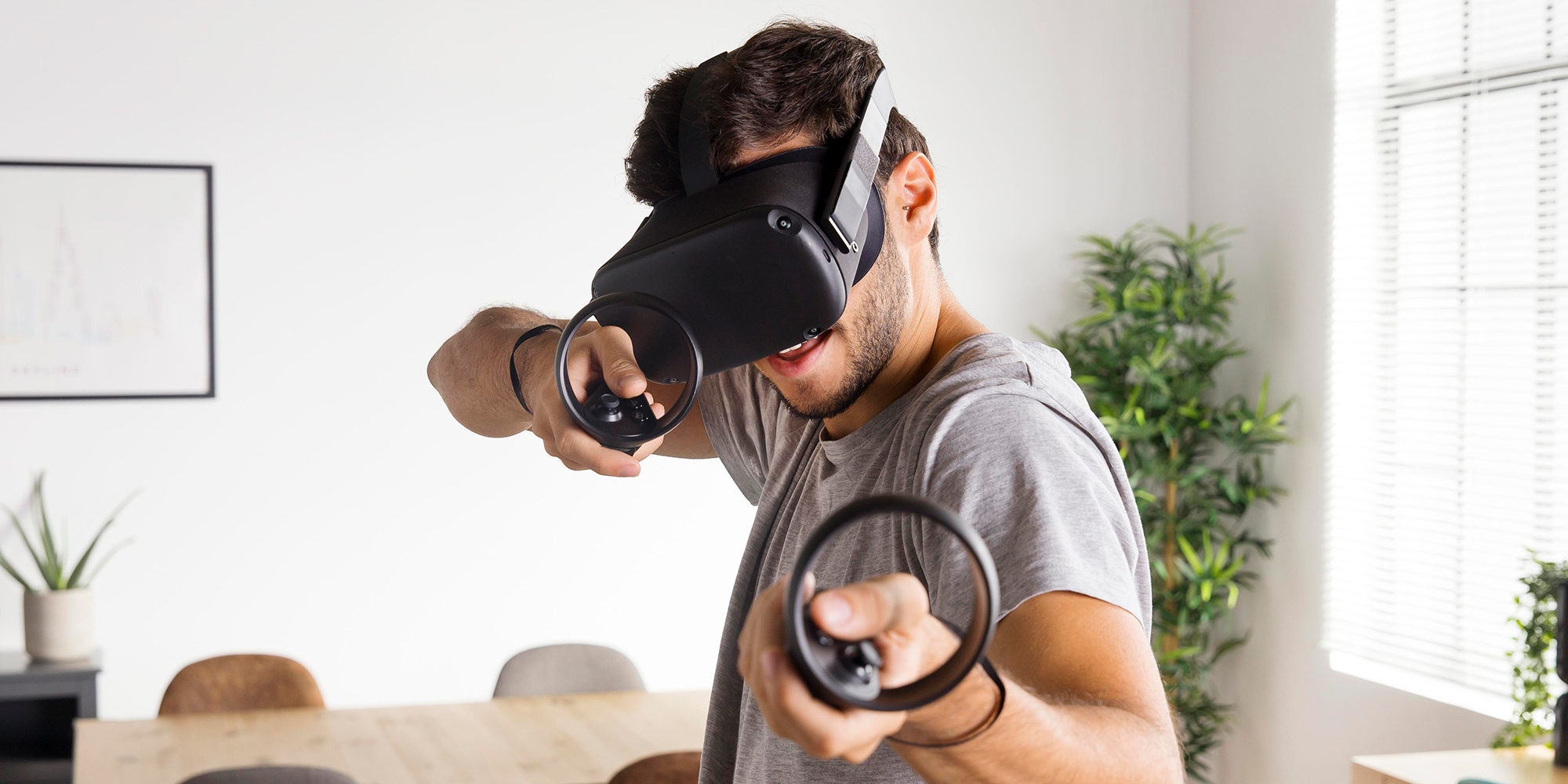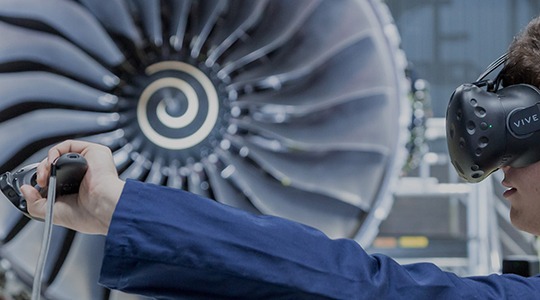Virtual reality (VR) training is reshaping how businesses approach skill development and knowledge transfer. With the traditional training landscape often falling short in engagement and retention, VR offers a compelling alternative. It provides learners with an immersive environment where they can interact, practice, and learn in real-time scenarios. This shift towards immersive learning solutions is not just about technology — it's about maximizing efficiency and effectiveness in training.
As a result, any virtual training company aiming for a competitive edge is now looking to integrate VR into their training modules. This article offers a deep dive into the design and development of VR training, providing insights and strategies for businesses to leverage this technology to its fullest potential.
Power of Immersion in Boosting Learning Outcomes
For more and more businesses, immersive training is key. It elevates learning by placing users in realistic scenarios, enhancing retention and engagement. This immersive approach ensures trainees not only learn but also apply knowledge effectively, setting the gold standard for modern training methodologies.
Scientific Facts Behind Immersive Learning
A study by the University of Michigan Medical School in partnership with Cybernet Systems found that surgeons who utilized VR training for 2 hours improved their task efficiency by a significant margin.
Another study supported by the Fulbright Distinguished Scholar Program revealed that surgeons trained via Virtual Reality performed operations 29% faster and made 6 times fewer errors than those trained through conventional methods.
Research conducted by Arizona State University in partnership with Anacapa Sciences, Inc. showed that soldiers scored 17% better using game-based simulation, a category that includes serious games for corporate training, compared to traditional training methods.
These studies underscore VR's growing importance and effectiveness in training across various sectors, including medical and defense. Integrating serious games for corporate training within VR environments further amplifies these benefits, offering a compelling case for businesses to adopt this technology.
Real-world Benefits of Immersive Training
Immersive learning has been shown to significantly enhance knowledge retention, with research indicating an increase of up to 75%. Companies like BP, Maersk, Airbus, and Walmart have leveraged virtual reality for training, ranging from oil rig operations to preparing employees for Black Friday.
A study involving students from Stanford University and Technical University in Denmark demonstrated that immersive learning through VR resulted in a 76% increase in learning effectiveness compared to traditional methods. Furthermore, immersive learning provides a safe environment for practicing skills that might be risky in real-world scenarios, ensuring that trainees can learn without fearing costly or dangerous mistakes.
The Evolution and Popularity of VR in Training

As VR training gains traction, understanding its evolution becomes paramount for any forward-thinking virtual reality training company or any other organization interested in maintaining better business performance. The pivotal moments of VR's ascent in professional training highlight its accelerating prominence in today's training industry.
A Brief History of VR in Education
VR has been a transformative force in education over the past two decades. An analysis from the Journal of Computer Assisted Learning highlighted 20 years of VR research in K-12 schools and higher education. The study found VR more prevalent in higher education, with disciplines like basic science, social science, with health and medicine leading the way.
Desktop-based VR was commonly used for inquiry-based learning, while immersive VR with commercial head-mounted displays favored direct instruction. The effectiveness of VR in education is evident, with its impact influenced by discipline, immersion level, and instructional design. As VR technology advanced, its accessibility in educational settings grew, with tools like Google Expeditions bringing immersive experiences to classrooms.
Why Businesses are Adopting VR Training
Businesses are increasingly recognizing the transformative potential of virtual reality training. This immersive tool offers a myriad of benefits, both to learners and organizations. For instance, Hilton's director of learning innovation heralds VR as "the future of learning." The immersive nature of VR engages learners in simulations of real-world environments, enhancing their training outcomes.
A Stanford University and Technical University study in Denmark found that VR training resulted in a 76% increase in learning effectiveness compared to traditional methods. Moreover, PricewaterhouseCoopers discovered that VR-trained employees learned up to four times faster than their counterparts in traditional classrooms. The immersive nature of VR accelerates learning and provides a safe environment for practicing high-risk tasks, ensuring that mistakes made during training don't have real-world consequences.
Crafting Effective VR Training: Best Practices and Guidelines
Crafting effective VR training content is paramount for achieving desired learning outcomes. Here are best practices and guidelines based on the provided references:
Understand the investment. VR training, like simulations and game-based learning, requires a significant investment due to its complexity and interactivity. However, the return on investment (ROI) can be substantial when considering engagement, efficacy, and long-term cost savings.
Choose the proper hardware. The choice of a VR headset can significantly impact the training experience and cost. Two primary options are:
1. 3DoF (3 Degrees of Freedom). Allows learners to turn their heads in all directions. It's cost-effective and suitable for scenarios where movement isn't crucial.
2. 6DoF (6 Degrees of Freedom). Tracks both rotation and position, offering a more immersive experience. It's ideal for training that requires movement and interaction.
Visual approach. Decide between live-action 360 video and computer-generated imagery (CGI).
1. Live-action 360 video. Uses real footage and actors. It can be cost-effective but has limitations in interactivity.
2. CGI (Computer-Generated Imagery). Uses 3D modeling to create a digital environment. It offers more interactivity and can be tailored to specific training needs.
Content relevance. Ensure that the VR content is dynamic, personalized, and tailored to the individual needs and learning styles of the trainee.
Evaluation and assessment. Regularly assess the VR training content to ensure it meets the desired learning objectives. Use feedback to refine and improve the content.
Leverage advanced technologies. Tools like ChatGPT, with natural language processing capabilities, can enhance VR training by generating dynamic content, providing personalized experiences, and assisting in evaluating training effectiveness.
Stay updated. VR technology is rapidly evolving. Stay updated with the latest advancements to ensure your training remains cutting-edge and effective.
By adhering to these guidelines, businesses can harness the full potential of VR training, ensuring that learners are engaged, content is relevant, and desired outcomes are achieved.
A Comprehensive Guide to Developing VR Training Modules
Developing VR training modules requires a meticulous approach to ensure effective learning outcomes. Here's a comprehensive guide to assist you:
1. Understanding the basics. A VR training module is a virtual environment designed to simulate real-life situations, allowing users to practice and learn in a controlled setting. These modules are prevalent in industries like healthcare, aviation, and entertainment.
2. Identifying training goals. Before starting the development process, clearly define the objectives of your VR training. What skills or knowledge do you aim to impart? This clarity will guide the entire design process.
3. Selecting the right VR technology. Hardware compatibility, ease of use, and long-term support are crucial. Popular VR headsets include Meta (Oculus) Quest, HTC Vive, and PlayStation VR. Ensure your desktop or laptop meets the recommended specifications for VR software.
4. VR development platforms. Platforms like Talespin offer tools and resources to create high-quality VR experiences. They enable realistic simulations, interactive experiences, and multi-platform support.
5. Benefits of VR in training. VR offers a risk-free environment for learners, allowing them to make mistakes without real-life consequences. This approach enhances learning and increases retention rates. Additionally, VR training can be customized to user needs, making the experience more personalized.
6. Planning your VR training module. Once you've identified your training goals, focus on creating VR experiences that address specific learning objectives. This ensures that the VR training aligns with your organization's needs.
7. Cost-effectiveness. VR training can lead to significant savings. Traditional training methods often require physical equipment and instructors. With VR, these expenses can be reduced by creating virtual environments that simulate real-world scenarios.
Try to follow this guide, and your company will be able to develop VR training modules that are engaging, effective, and aligned with their training objectives. Or just simply partner with us to rely on the shoulders of professionals with years of experience building tailored VR training programs.
The Importance of User Experience in VR Training Design
Ensuring a seamless user experience (UX) is pivotal in VR training design. A well-crafted UX not only enhances engagement but also ensures effective knowledge transfer. As VR becomes integral to training methodologies, prioritizing user-centric design becomes essential for achieving optimal learning outcomes and maximizing the benefits of immersive training.
Crafting Intuitive and Engaging VR Interfaces
Crafting intuitive and engaging VR interfaces is fundamental to the success of any virtual training program. An intuitive interface ensures users can navigate the virtual environment effortlessly, reducing the learning curve and potential frustrations. It's essential to prioritize user-centric design principles, ensuring that menu layouts, interaction points, and visual cues are clear and easily accessible.
Engaging interfaces, on the other hand, captivate users, immersing them fully in the learning experience. This can be achieved by incorporating interactive elements, realistic simulations, and feedback mechanisms that resonate with the user's senses. By harmonizing intuitiveness with engagement, VR interfaces can facilitate knowledge transfer, enhance skill development, and ensure learners remain invested in their training journey.
Feedback Mechanisms and Continuous VR Training Improvements
Feedback mechanisms are crucial in VR training, serving as a bridge between users and developers. By gathering real-time responses from trainees, these mechanisms provide invaluable insights into the effectiveness of the training modules. Whether through direct user feedback, performance metrics, or behavioral analytics, understanding user experiences can pinpoint areas for enhancement.
Continuous improvements, driven by this feedback, ensure that VR training remains relevant, effective, and aligned with evolving learning objectives. Based on user interactions and feedback, iterative refinements can lead to more immersive and tailored training experiences. Integrating robust feedback mechanisms and committing to ongoing VR training enhancements ensures that the virtual learning environment remains dynamic and responsive, consistently delivering optimal learning outcomes.
Real-world Applications and Successes of VR Training
VR training has made significant strides in various industries, showcasing its versatility and effectiveness. For instance:
Hand rehabilitation VR training by Program-Ace. Our company has developed a VR healthcare application, "Hand Rehabilitation VR Training," designed for the Oculus Quest platform. This immersive solution aids hand rehabilitation by placing users in a virtual environment where they interact with a virtual trainer, Andy, to perform specific hand movements. The app emphasizes precision, utilizing a high-accuracy tracking system to monitor minute hand and wrist movements, ensuring effective treatment outcomes.
Leveraging VR for training its associates, Walmart has seen substantial efficiency gains. One module, "The Pickup Tower," which instructs on operating a kiosk for online order pickups, reduced training time from eight hours to just 15 minutes without compromising efficacy. This shift in training methodology has potentially saved over a million full days of work.
VR simulations were developed for training surgeons in implanting orthopedic devices, allowing them to learn procedure steps without patient risk. This method proved efficient in reducing errors and increasing real-world efficiency, with students trained in VR scoring 233% higher than those using passive learning tools.
These real-world applications underscore VR's transformative potential in training, offering businesses a potent tool to enhance employee skills, reduce training time, and achieve better outcomes.

Explore the Premier VR Training Solutions of Program-Ace
Our custom software development company has a proven track record in creating advanced VR training programs. Focusing on precision and user-centric design, we deliver solutions that meet real-world training needs. As the training industry evolves, having a reliable partner with expertise in VR becomes essential.
Contact us if you are considering integrating VR into your training modules or seeking to enhance existing ones. Let's discuss how our expertise can benefit your organization.













